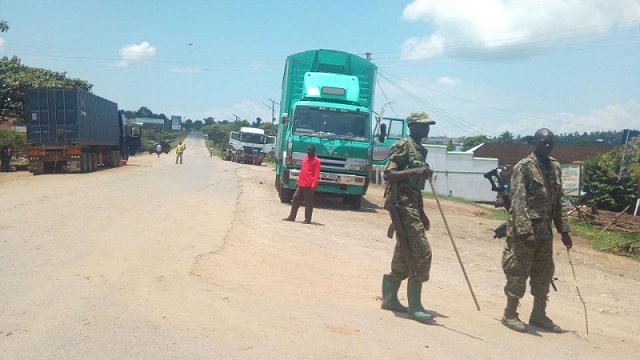

In the 2019 financial year, tourism accounted for 11.7% of GDP and 25.8% of foreign exchange earnings, thereby being a major source of employment and tax revenue.
Tanzania total lockdown driver#
The announcement was somewhat anticipated, given the sharp fall in tourism since the outbreak and the sector’s importance as a driver of Tanzania’s economy. The government recently announced that it plans to reverse its suspension on international flights so as to revive tourism, and adopt social distancing and sanitation policies.

The government additionally closed all international borders and suspended international travel in early April, and a mandatory 14-day quarantine at the point of entry in government-designed facilities was introduced. The public was also urged to maintain social distancing, wear face masks, and maintain sanitary habits. In Tanzania, on the other hand, enterprises are allowed to operate, and citizens can attend religious gatherings with social distancing rules, while schools, universities, and other miscellaneous mass gatherings have been banned.
Tanzania total lockdown full#
For instance, Rwanda closed its borders and implemented a full two-week lockdown since its first case, while Uganda and Kenya imposed a shutdown of economic activities and restricted mobility within the country through national curfews. Since the first COVID-19 case on March 16th, the Tanzanian government implemented noticeably less stringent responses compared to its neighbours.

The toll of the virus on the existing healthcare infrastructure has also been severe as hospitals in the commercial capital, Dar es Salaam, have struggled to manage the diversion of resources towards new COVID-19 patients, while treating other deadly diseases in tandem, such as Malaria. However, given the low testing levels and the uncertainty around Tanzania’s released figures, it is highly likely that the true number of cases is substantially greater. According to WHO, Tanzania has the second-highest number of COVID-19 cases in the East Africa community behind Kenya, with 509 cases and 21 deaths as of May 26th (22 days since last reported). The government’s firm focus and commitment during this pandemic have been to avoid a complete halt of economic activities. Much of this growth was driven by strong public investment and export earnings. Due to the pandemic, the World Bank projects that economic growth in Tanzania will drop sharply to 2.5% in 2020 from a much higher growth rate of 6.9% that the government announced in 2019. Tanzania is the second-largest economy in East Africa, with a population of almost 60 million and a growth domestic product (GDP) of US$ 52 billion (2018). Although lockdowns have been effective in numerous contexts, countries such as Ethiopia and Tanzania have avoided full blanket lockdowns, and instead implemented a variation of social distancing measures to balance the trade-offs.

Countries should therefore be encouraged to systematically assess the trade-offs between the health crisis and other emerging issues, and form context-specific containment strategies and recovery plans. More and more evidence increasingly demonstrates that lockdowns are not effective in developing country contexts. A recent study from the IGC shows that an estimated 9.1% of the population in sub-Saharan Africa have immediately fallen into extreme poverty due to COVID-19, and that 65% of the increase is from lockdown measures. The pandemic and the accompanying lockdowns have also worsened the already severe food insecurity problem, increasing the proportion of people living in extreme poverty. In countries with planned 2020 elections, such as Cote d’Ivoire and Ethiopia, the loss of livelihoods directly resulting from the pandemic has increased the likelihood of political and civil unrest. In terms of the potential economic crisis, it is estimated that 150 million people are at risk of losing their jobs and incomes across the formal and informal sectors. For the African continent, COVID-19 has meant that several challenges and multiple crises will have to be dealt with at once. Governments in developing countries are not in the position to treat the COVID-19 pandemic as only a health crisis. To maintain multiple competing priorities, the Tanzanian government can increase public health funding to local health centres to implement mass testing, enforce social distancing and sanitation measures, and invest in formal small-holder farmers to produce for the domestic economy. Tanzania’s unconventional approach to COVID-19 may be slow in response and may lack direction, but its uniqueness illustrates the need for governments to form context-specific smart containment strategies and recovery plans.


 0 kommentar(er)
0 kommentar(er)
